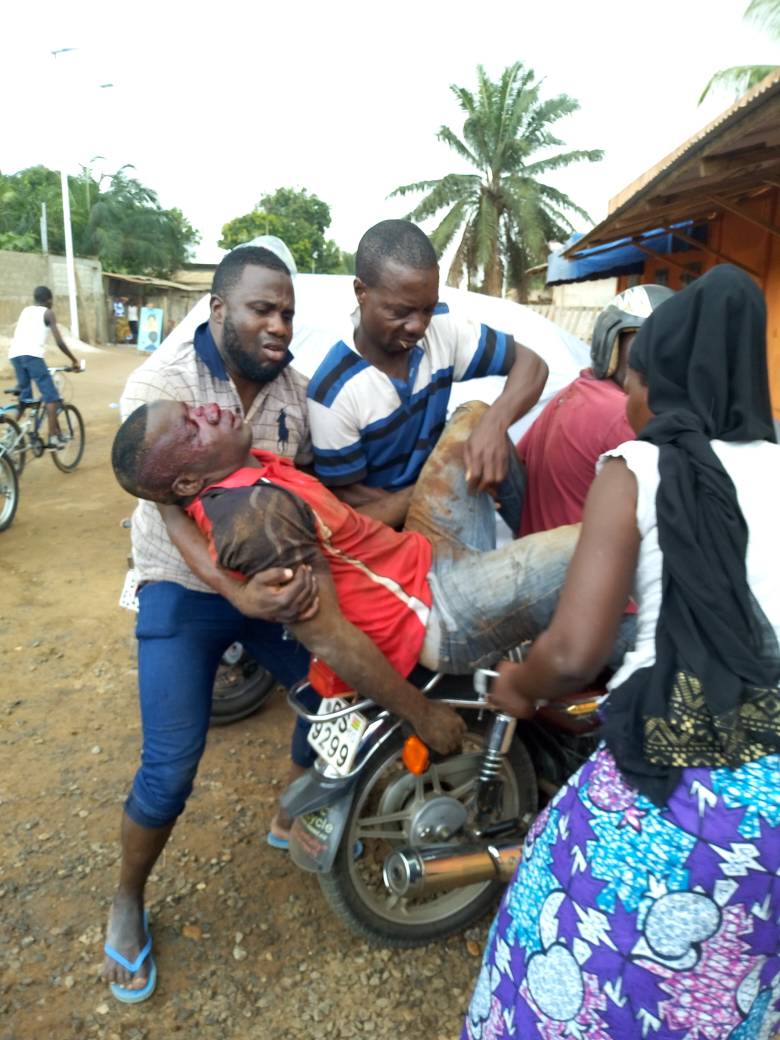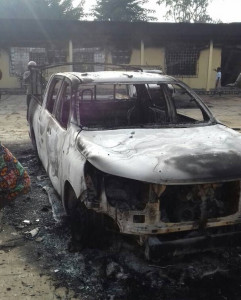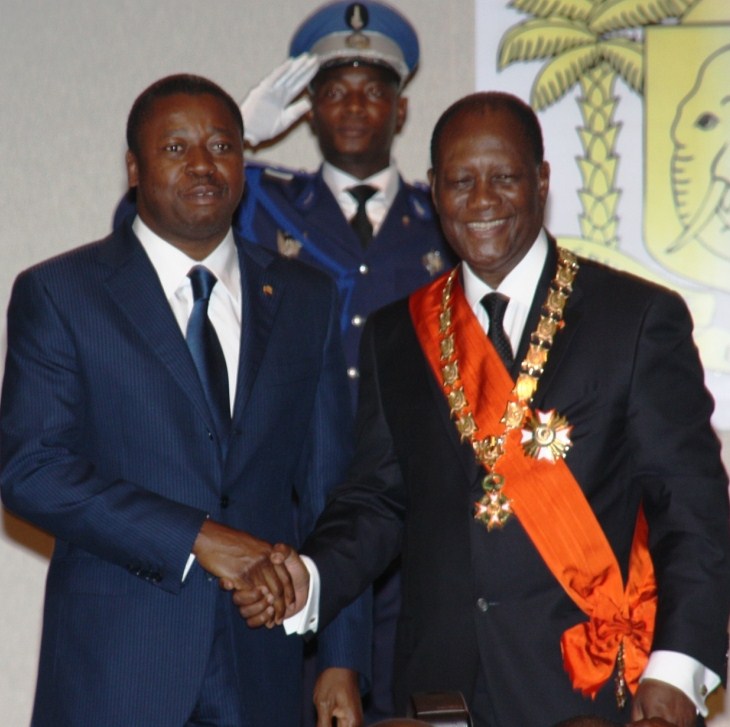Can Togo’s president Faure Gnassingbe survive the growing popular revolt?
BY JIBRIL TURE
It’s anybody’s guess whether President Faure Gnassingbe can survive the nationwide growing popular revolt that, for more than two months, has shaken the two largest cities in the country, Lome and Sokode, to their roots.

Since the April 2005 uprising to protest his undemocratic rise to power to succeed his father, the late Gen. Gnassingne Eyadema who had passed away after serving for nearly 40 years as president, President Faure Gnassingbe has never seen anything like the ongoing popular uprising of massive crowds demanding that he step down to end his family’s 50-year grips on power. In just a few days, the 2005 demonstrations caused 500 deaths. The death toll in the current riots is much lower—at least so far—but the crowds are larger and seem unstoppable, even after more than two months of demonstrations.
The secret mediation by the president of neighboring Benin, Patrice Talon, who faces popular discontent in his own country with demonstrators accusing him of “savage privatization” and enriching himself and his surrogates, has so far yielded nothing.
The furious crowds on the streets of Lome, Sokode and other cities chant “Down with Faure!” “Faure out!” while burned tires, barricades, tear gas and real-bullet shootings paint the picture of a war zone.

Not only are the current demonstrations unprecedented in terms of the size of the crowds and their duration—two months and counting—two of the main theaters is the second largest city of Sokode, which has traditionally aligned itself with the northern region, the home of the Gnassingbe family. For the first time, even the Gnassingbes’ home town of Kara has witnessed demonstrations.
Not unlike other African countries, politics in Togo operates largely along ethnic lines. Sokode is home to the novel, charismatic leader of the current uprising, Tipi Salifou Atchadam, 50, president of the National Pan-African Party, a rather unknown entity in Togo’s political theater until recently. An eloquent former student leader who masters the art of capitalizing on the youth’s frustrations stemming from high unemployment and poverty, Atchadam has decided not to go it alone. Rather, he has joined hands with the traditional opposition led by Jean-Pierre Fabre of the Union of the Forces for Change, UFC. (UFC was founded and formerly led by Gilchrist Olympio, the son of Togo’s charismatic first president, Silvanius Olympio. Gilcrhist Olympio, who was a thorn in the side of former President Eyadema for decades, made peace with the former president’s son and current president, Faure Gnassingbe, causing a rift between Fabre and him, but Fabre fought to keep the leadership of the party and stayed in the opposition.)
 One key-Togolese leader who has stayed away from the crowds, though apparently not aligning himself with the Gnassingbe government, is former prime minister and former speaker of the parliament, Agbeyome Kodjo.
One key-Togolese leader who has stayed away from the crowds, though apparently not aligning himself with the Gnassingbe government, is former prime minister and former speaker of the parliament, Agbeyome Kodjo.
But Kodjo has not been mute in the political crisis that is playing itself out. In a statement two weeks ago, he called for “reforms in peace.” In yet another appeal on Ocrober 20, days after the arrest of a Muslim leader in Sokode close to the opposition, Djobo Mohamed Allassani—which triggered new and more violent incidents and deaths—Kodjo once again called on both sides to end the violence.
In a presse release on Friday, Kodjo’s party, OBUTS, “vigorously condemns and disapproves all forms of violence both on the security and defense forces and on the demonstrators.”
The party also calls on the Togolese political elite to work toward a consensual solution to

quickly end the crisis:
“Our common destiny requires that we do so! In Togo, as far back as one can remember, our values rise the highest not when we bring down our fellow-citizens, but rather when we try together to uplift all the daughters and sons that make up the national community.”
At the time of this writing, there’s no standing order for new demonstrations. Also, persistent news reports claim that mediation efforts are underway to end the crisis. Little is known about Benin president Patrice Talon’s two meetings with his Togolese counterpart, or their alleged phone conversations. But it appears the Benin head of state is yet to meet with the opposition, although unconfirmed rumor has it that members of the Togolese opposition were seen in Cotonou recently.

For sure, Cote d’Ivoire’s president, Alassane Ouattara, who reportedly has a cozy personal relationship with his Togolese counterpart, met with Ghana’s president Akufo Addo on 6 October to allegedly set an Ivorian-Ghanaian mediation mechanism in motion. According to news reports, the regional leaders’ message to the Togolese president is to free the Sokode Iman, and to consider relinquishing power at the end of his current mandate in 2020. The regional leaders also call on the opposition leaders to end the demonstrations.
A conciliatory tone noted in remarks by Tipi Salifou Atchadam, the leader of the insurrection, gives observers hope that a peaceful outcome is likely.



